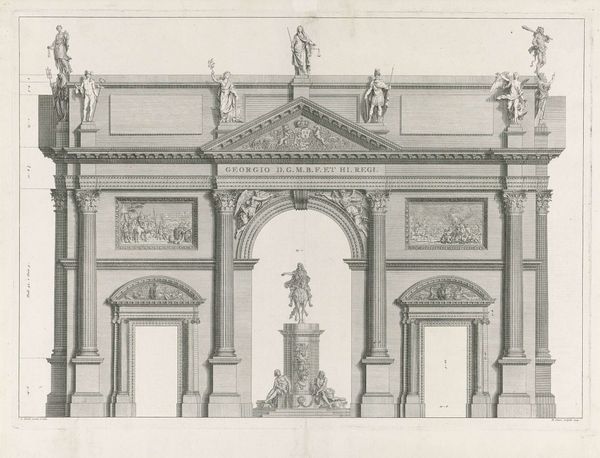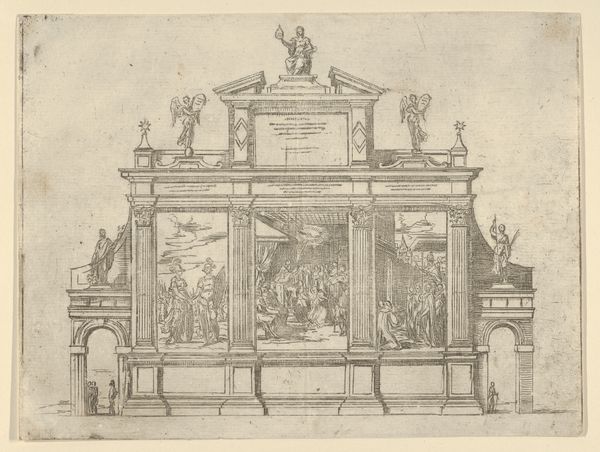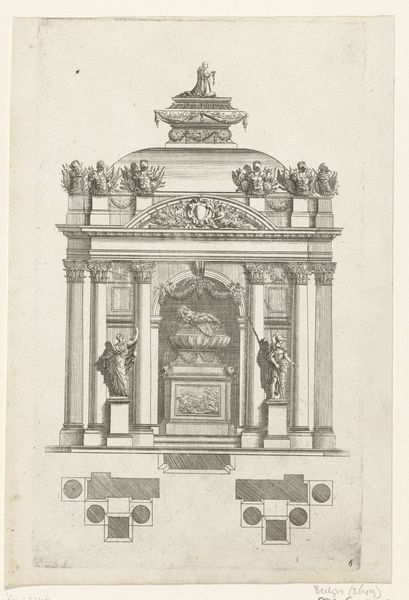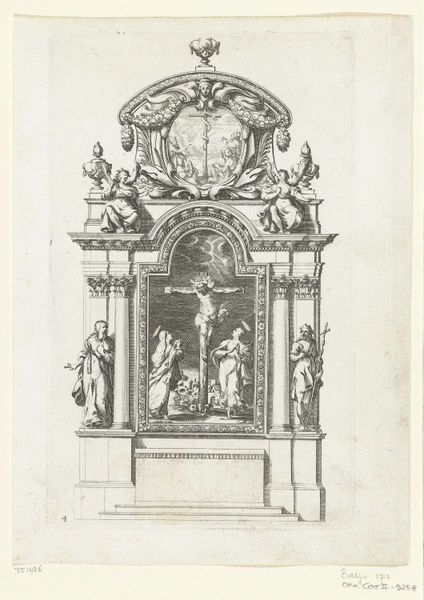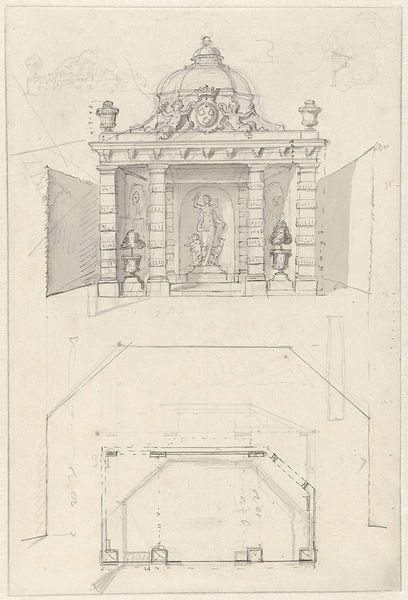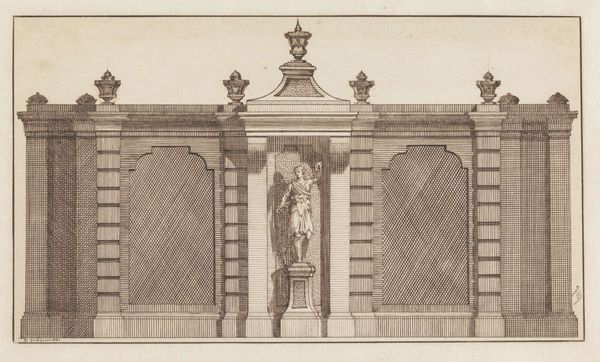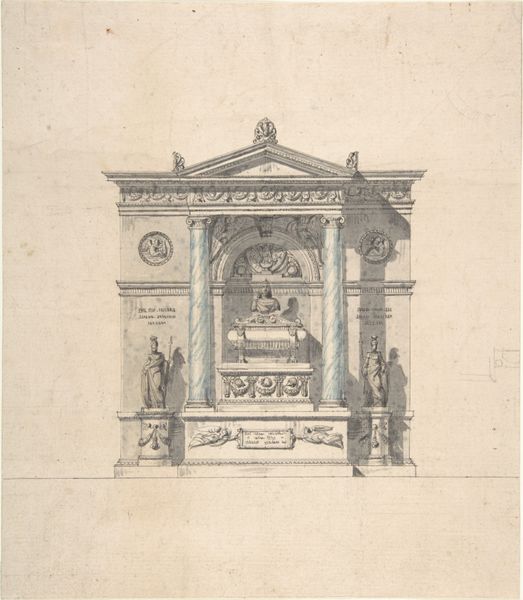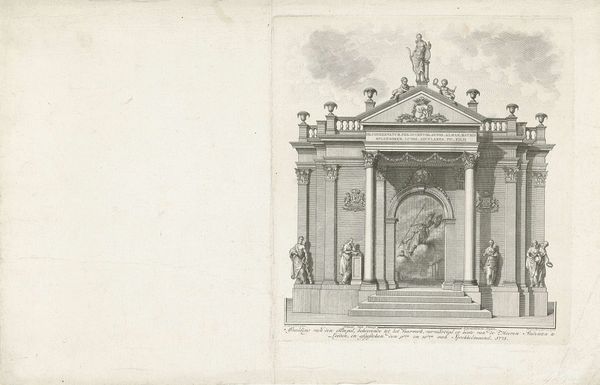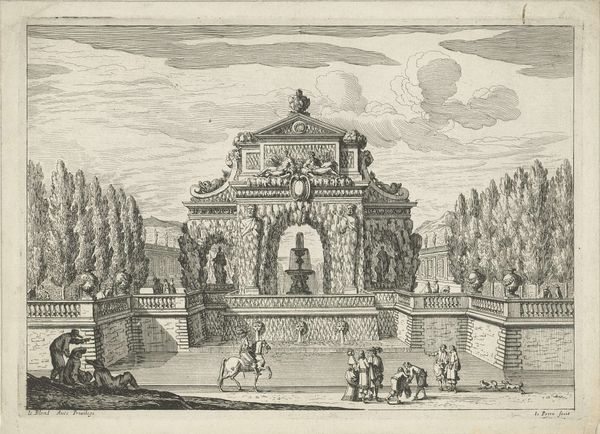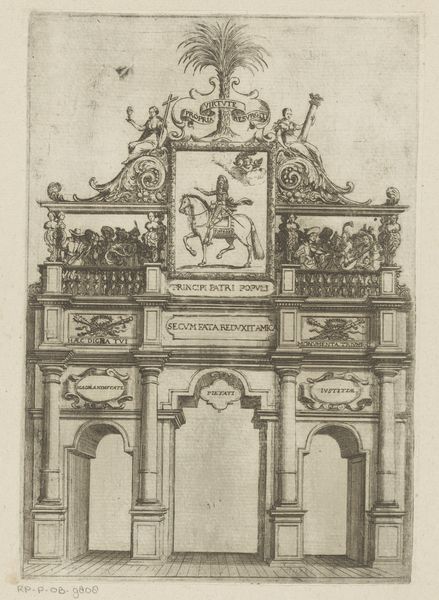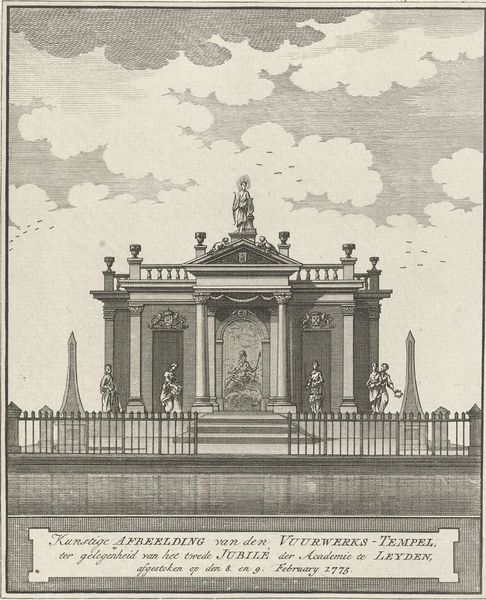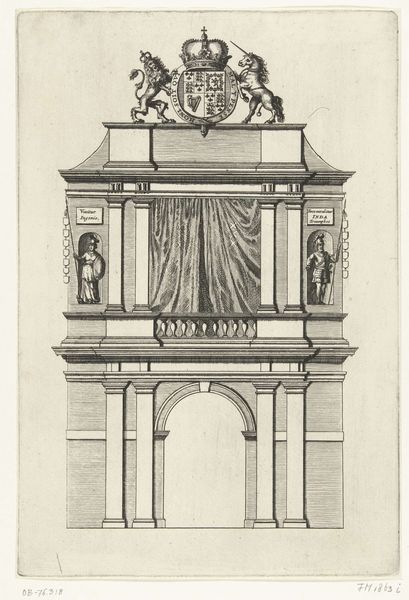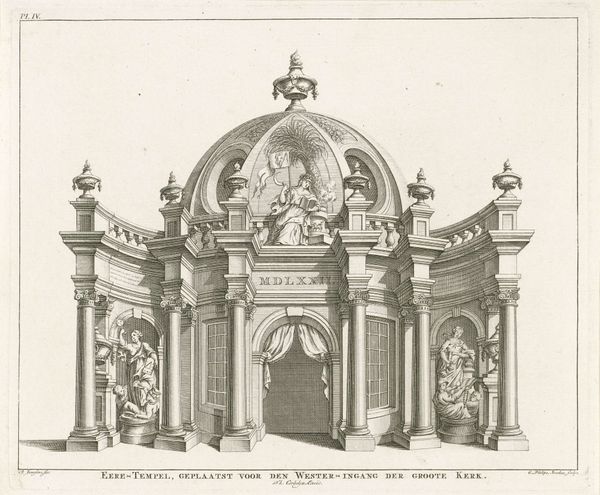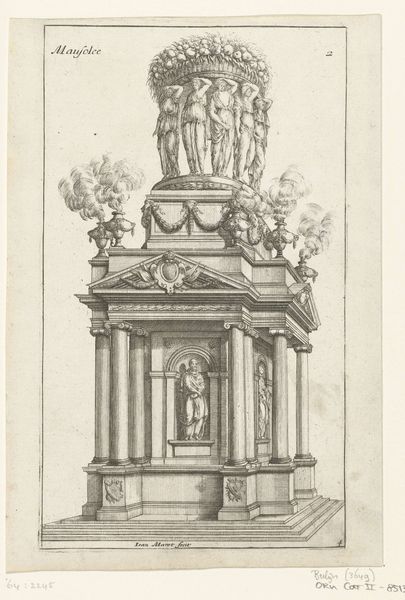
Podium voor het vuurwerk bij de viering van het Tweede Eeuwfeest van de Leidse Hogeschool, 1775 1775
0:00
0:00
anonymous
Rijksmuseum
print, engraving, architecture
#
neoclacissism
# print
#
geometric
#
cityscape
#
history-painting
#
engraving
#
architecture
Dimensions: height 158 mm, width 220 mm
Copyright: Rijks Museum: Open Domain
Curator: This print, created in 1775 by an anonymous artist, depicts the Podium voor het vuurwerk bij de viering van het Tweede Eeuwfeest van de Leidse Hogeschool, now residing in the Rijksmuseum. Editor: What strikes me first is this serene formality. It's so rigidly structured, almost like a stage set waiting for something monumental to happen. Curator: Indeed, the piece embodies Neoclassical principles with its symmetrical composition and architectural elements, such as the columns and statuary, all rendered through meticulous engraving. Editor: And it feels, in its monochrome stillness, like a moment frozen in time just before a burst of light and color. Fireworks for the ages, distilled down to the bones of order. Is that cross I see on the main entablature or another firework rocket waiting for launch? Curator: A cross serves as a clear reference to Christian themes in architecture during this time. Notice the figures positioned alongside it are allegorical references related to science, academia, and civic engagement, celebrating the bicentennial of Leiden University. The artist subtly integrated historical context within this meticulously crafted facade. Editor: So it's less about random beauty and more about planned power, academic ambition launched skyward. Do you think those neoclassical heroes know they are about to become extras in their own light show? A historical mashup in smoke. Curator: It also captures the architectural ambition of public spectacles during that era. Editor: There’s also a sense of artificiality, though, maybe even anxiety baked into the precise lines, don’t you think? It speaks to humanity’s constant tension with nature and order. Curator: Absolutely, but what remains powerful about this print is the artist’s skillful execution. Look at the linear detailing in the architectural components, how effectively it communicates depth despite the two-dimensional format. Editor: Thinking of it all, this isn't merely an image; it's a diagram of an idea. Like those celebrations of thought were so important at that time, literally etched in light and charcoal waiting to blast some symbolic delight on this august university's crowds. Curator: The level of precision reflects the broader Enlightenment ideals of reason and order which influenced artistic and architectural production during that period. Editor: Now I'm looking closer at the architecture! Even though there is so much depth that they create it feels very constrained. I feel limited with so much "openness". The way this piece communicates so much structure makes my body have an inverse reaction, makes me wanna get out, lol. Curator: So you interpret the work through an experiential and affective lens, while I read the work as a visual artifact shaped by historical and theoretical conventions. Fascinating how the piece continues to offer multiple points of access across time.
Comments
No comments
Be the first to comment and join the conversation on the ultimate creative platform.
